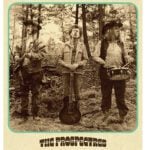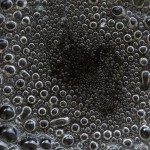Home »

The Perseid Meteor shower 2023
By Rick Nowell
The annual Perseid Meteor shower peak occurs Sunday, 13 Aug at 1:58 a.m. MDT.
The evenings of Saturday night Aug. 12 and Sunday morning Aug. 13 are best at a possible 100 meteors/hr. The next evening Sunday Aug 13/14 should have about 50 meteors/hr.
The dim crescent Moon (7% lit) doesn’t rise until 3 a.m., so skies will be dark. Hopefully we won’t have forest-fire smoke to hide it. Even so, we should still be able to see meteors overhead. Three years ago the Perseids were active at over 120 meteors per hour, or two per minute.
Best times for viewing would be Sunday morning around 3 to 4 a.m. (the final dark hour before dawn) when the constellation Perseus rises highest in the sky. To see the most meteors, go out of town to a dark location. Rates are estimated to be about 100 meteors per hour (two per minute) once Perseus rises in the east.
Off-Peak: After the peak, the rates decrease by 50% each night. It takes the Earth a week to pass through the ice and dust trail from comet Swift-Tuttle. The shower will gradually taper off and end by Aug. 24.
 Meteor Trails: Their trails will all point to the constellation Perseus (if it’s a Perseid, it could also be a k-Cygnid or a sporatic). The closer they are to Perseus, the smaller their trail: and the further away, the longer the trail. Look for their colours—at high speed (an average of 59km/s) they compress and ionize the air to a green; then that fades to yellow, orange, red as it slows down. If they disrupt and flare, you may see green/bluish wide streaks that glow afterward for a second or two (mainly it’s water ice, but there may be trace metals present like copper or cobalt). None of these 1cm diameter ice pellets will hit the ground, they vapourize up in the upper atmosphere above 80 km.
Meteor Trails: Their trails will all point to the constellation Perseus (if it’s a Perseid, it could also be a k-Cygnid or a sporatic). The closer they are to Perseus, the smaller their trail: and the further away, the longer the trail. Look for their colours—at high speed (an average of 59km/s) they compress and ionize the air to a green; then that fades to yellow, orange, red as it slows down. If they disrupt and flare, you may see green/bluish wide streaks that glow afterward for a second or two (mainly it’s water ice, but there may be trace metals present like copper or cobalt). None of these 1cm diameter ice pellets will hit the ground, they vapourize up in the upper atmosphere above 80 km.
 Where to look? The composite photos above show the entire sky, and all the meteors that fell on 11 and 12 Aug 2015 over Cranbrook; taken by our college meteor camera. Perseus is the constellation to the Northeast (middle left side of the photo). Meteors by Perseus there have short trails and are fast, hard to see. Meteors seen straight overhead going through Cygnus have long slower trails, and usually it is clearer above if there is smoke haze around. There are slightly more meteors seen high to the West around Hercules and above the handle of the big dipper; since the meteor trails are longer there, and the meteors skim lower in a greater volume of atmosphere. I aim my cameras where it’s darkest, away from the Moon or city streetlight glow.
Where to look? The composite photos above show the entire sky, and all the meteors that fell on 11 and 12 Aug 2015 over Cranbrook; taken by our college meteor camera. Perseus is the constellation to the Northeast (middle left side of the photo). Meteors by Perseus there have short trails and are fast, hard to see. Meteors seen straight overhead going through Cygnus have long slower trails, and usually it is clearer above if there is smoke haze around. There are slightly more meteors seen high to the West around Hercules and above the handle of the big dipper; since the meteor trails are longer there, and the meteors skim lower in a greater volume of atmosphere. I aim my cameras where it’s darkest, away from the Moon or city streetlight glow.
COLLEGE CONTINUING EDUCATION COURSE:
The College of the Rockies in Cranbrook has a Continuing Ed evening course, for two evenings, on Friday Aug 11 from 8-10 p.m. and Monday Aug 14 from 9-11 p.m. GIRE-400. Cost $109 plus GST. Learn more.
We are timing this course to take advantage of the Perseid Meteor Shower. It is scheduled later so people can finish work, eat supper and attend.
On Friday night I’ll show slideshows of 6 summer constellations on a smartboard and mark in the mythical figures, like Ursa Major the bear, arc off to Arcturus in Bo-otes. Follow the pointer stars to Polaris in Ursa Minor,, arc off to Arcturus. Then jump to Cassiopeia. Where is Perseus? Then Andromeda and Pegasus. It would have follow-along activities like drawing in the Bear and other figures on the smartboard. I’ll talk about the Perseid meteors and where the five meteor impacts occurred in the East Kootenays the past ten years. There are photos and our rooftop meteor camera took video of the bolides.
Second Session on Monday night: More summer constellations, like where is Cygnus the Swan, Aquila the eagle, Lyra, Hercules, the Milky Way, Sagittarius and the Black hole in Sagittarius A*. When it gets dark, go on the roof to spot Perseid meteors. I’ll use a green laser pointer to identify constellations. You’ll have the use of 15×70 binoculars provided on tripods, or you can bring your own. Binoculars can see the M13 globular cluster in Hercules, Bode’s Galaxy in Ursa Major, and the Great Andromeda Galaxy in Andromeda. Other binocular objects are the Double Cluster between Perseus and Cassiopeia and M15 globular in Pegasus.
Some Lab Demos: 1. A few sample meteors, 2. What colours are stars and nebula? View hydrogen discharge spectra with diffraction gratings, and 3, If I pump the air out of a bell jar and apply 10,000 volts; will it glow like the Northern Lights?
Lead image: This photo taken near Cranbrook shows a meteor streaking through the constellation Aquila. Starting blu-green and turning yellow and red as it slows down. The bright star Altair is at the top left of the photo. Those aren’t clouds, that’s the Milky Way glow and dark gases visible. Scutum (the Shield) is the small “C” shape at bottom in the Milky Way, 1/4 from bottom left. {Shot with a Nikon D7000 with a Vivitar 28mm f/2.0 lens; 15 second exposure at 6400 iso. Photo Credit R. Nowell}







